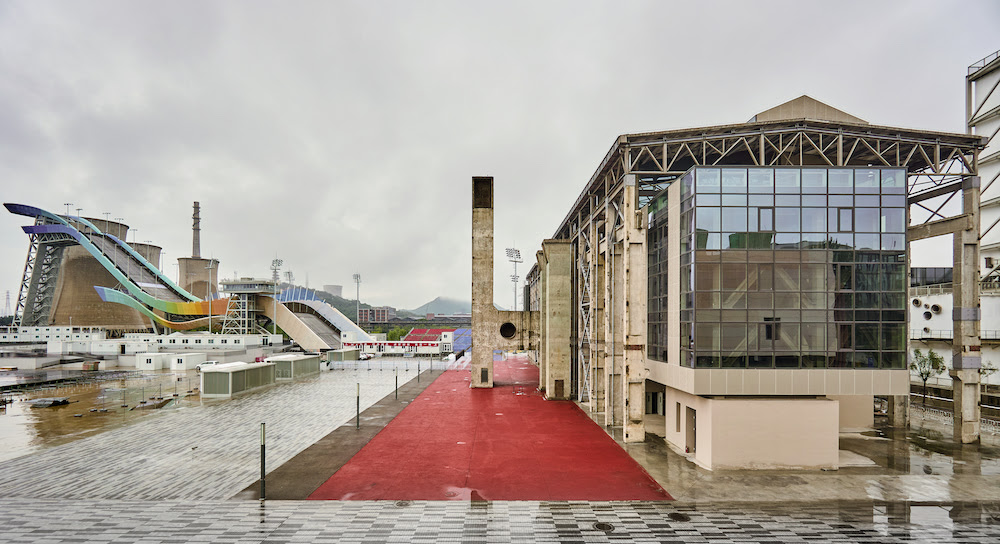The Visitor Center di Shougang, Olympic site that will host the Big Air disciplines (snowboard and freestyle skiing) of the next XXIV Olympic Winter Games in Beijing 2022, has been entirely designed by a team of researchers from the Department of Architecture and Design of the Politecnico di Torino. The work was born from the redevelopment of a former disused industrial area, thanks to the long relationship between the Polytechnic and Tsinghua University. The university is the only foreign body to have worked in the architectural design of structures for the Winter Olympics in the Chinese capital.
Beijing 2022 Olympics: the contribution of the Piedmontese university
The Polytechnic of Turin designed the Visitor Center of the Shougang Olympic site, where Big Air competitions (snowboard and freestyle skiing) will take place during the next Olympics of Beijing 2022 departing next February 4th. The university was the only foreign reality invited to participate in the design of spaces for the XXIV Winter Games.
The project was led by Department of Architecture and Design, with the advice of the Departments of Structural and Geotechnical Engineering and Energy. The coordination was by Michele Bonino, professor of the Polytechnic and delegate of the Rector for International Relations with China and Asian Countries and the realization was completed in collaboration with Tsinghua University in Beijing.
The work is part of a broad urban regeneration project, that of the Shougang area, which aims to create spaces suitable for physical well-being, sport and sociality, starting from the enhancement of the existing building heritage. The Shougang site, which spans 9 million square meters once occupied by the state’s largest steel plant, was decommissioned in 2005 to reduce pollution on Beijing.
The Visitor Center – 11 thousand square meters in the heart of the Olympic cluster – was born from the recovery of a part of the site, the “Oxigen Factory”, and was entirely designed by a team of researchers from the Department of Architecture and Design of the Polytechnic of Turin, who applied the notions of Urban Ergonomics, a discipline that proposes to design infrastructures for well-being in contemporary urban life with the aim of improving the relationship of the human body with the built environment. The notion of Urban Ergonomics was born to leave from two doctoral theses developed by Marta Mancini of the Polytechnic of Turin and Deng Huishu of Tsinghua University as part of the Polytechnic project “Joint Projects with Top Universities”, launched by the Polytechnic in 2017.
The Visitor Center offers, at the base of the building, a large playground which will favor movement and interactions between body and space, while, on the upper floors, large areas for visitors to the Olympic site illuminated by large windows that will allow you to admire the entire competition cluster from above, starting from the Big Air Slope , the world’s first permanent facility dedicated to the discipline, designed by Tsinghua University.
Read also: The impact of technology on the Beijing 2022 Olympics
The word to the experts
“We are proud to be protagonists of the Beijing 2022 Olympics thanks to this project, which sees us engaged as the only non-Chinese designers for the works created for this event, proving how much our University is recognized in China as a university of very high level both in its teaching activities and in those related to research and design “, comments the Rector of the Polytechnic, Guido Saracco.
“Thanks to the long-standing collaboration between Politecnico di Torino and Tsinghua University, the first Chinese university and permanently among the top fifteen in the world, the Chief Architect of the Beijing 2022 Olympic sites and dean of the University School of Architecture Zhang Li invited the Polytechnic to take part in the Masterplan he conceived for the Shougang Olympic site. Having developed an Olympic site in a disused industrial area has a strong symbolic value: the Chinese government has asked for a careful use of existing resources and the reuse of buildings already present on site, aiming to contain costs and the sustainability of the Olympics ” , says Michele Bonino. “The Visitor Center is a calling card of this approach: the structural skeleton of the old factory has been kept and, inside, a new volume of concrete and glass has been designed to remain suspended from the ground. Thanks to an innovative technical solution, it leaves the ground floor almost free of supports, creating a covered public square that welcomes visitors at the beginning of their Olympic experience “.
“Our group of young researchers and students guaranteed the continuous production of sketches, drawings, renderings, models, in permanent connection with the Chinese colleagues of Tsinghua”, continues Camilla Forina, now in her thirties, who coordinated the production of materials at the China Room of the Polytechnic. “On a frequent basis, we have organized workshops between this operational group and the teachers, starting with the architectural design experts, then extending to our colleagues in structural and plant engineering and architecture technology. In this way, we have approached the working method of Chinese universities, where it is usual for students and professors to work side by side on projects for the real world, with great educational benefit for students ”.















Leave a Reply
View Comments